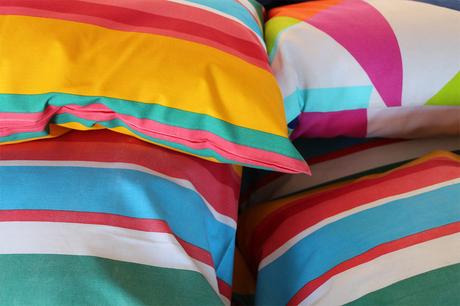
Buying pillows sounds simple but can prove bewildering. Hence, to cut the confusion and try to help anybody out there facing replacing their pillows with all they need to get the job done rather than turn into a nightmare, here is a quick guide.
When to Replace Pillows?
According to pillow retailers, SleepyPeople.com, the experts all give differing answers as to how often a pillow needs to be replaced. Then, if even the experts can't decide, what hope is there for the rest of us?
Fortunately, pillows have means and ways of letting us know when they've had enough. So, rather than religiously tossing your pillows in favour of new ones every six months for fear of otherwise breaking out with acne, avoid buying into the scaremongering and instead watch out for the following signs your pillows are past their best:
- Your pillow has lost its plumpness
- You have begun to experience back or neck ache
- You wake more frequently and need to adjust your pillow in the night
- If you are a side sleeper, you have begun experiencing dull earache
- You are experiences allergies
- You have resorted to using more than one pillow
- Your pillow is simply old
Pillow Plumpness and Sleeping Position
Most people have a preferred sleeping position, whether on their back, side or stomach. They may not rigidly stick to it every night, but will usually and more often than not wake in the same position.
Consequently, many pillows sold these days are sold featuring guidance as to who the pillow might suit. That is, pillows often come with sleep position guidance; next time you are in the shops and find yourself in the pillow isle, see for yourself; after all, it is guidance worth taking heed of.
Meanwhile, to learn how sleep position affects the plumpness and type of pillow you should be usin and to maximise your chances of a good night's kip, read the article: Best Pillows for Different Sleeping Positions, published via the Spine Health website.
Pillow Fillings and Types
The two most common pillow types sold in the UK are feather / down pillows and Polyester / microfibre fill pillows. Hence, here is a look at both options, and the pros and cons associated with both.
Polyester / Microfibre Fill
Polyester or microfibre filled pillows are massively popular because they are super cheap, readily available and as such provide a convenient, inexpensive and no-frills way of replacing an old pillow. Microfibre pillows are also a cheap solution for those prone to allergies and asthma as the synthetic material from which they are made is relatively hypoallergenic.
On the down side, polyester pillows are not made to last. In fact, of all the popular pillow fillings out there in 2016, polyester pillows hold up the worst in plumpness and longevity tests; they fall flat relatively quickly, can clump and require readjusting in the meantime and as such can actually cost a person more as they will need regularly replacing.
Feather and Down
Feather and Down pillows are loved by some and loathed by others. Those who love them are quick to point out that feather and down pillows keep their plumpness and retain their shape for longer than a pillow should probably be kept. Hence, whilst they can be expensive, they can prove a savvy investment as they will not need replacing anytime soon. In fact, housekeeping super hero Martha Stewart is a huge fan of feather pillows, readily admitting that some of the feather and downs pillows used on the beds within her home are '10 to 15 years old'. To read the full article in which Martha Stewart made this confession and gets further advice from her as to pillow buying, visit the Martha Stewart website.
Meanwhile, those who loathe feather pillows most often do so because feather and down pillows can cause or exacerbate allergies and allergy triggered conditions such as asthma. Also, more people in 2016 than ever before are uncomfortable with the idea of sleeping on a pillow filled with feathers; concerns over animal welfare prevent them from plumping for feather pillows. Further, and finally, despite how long they last, down pillows in particularly are difficult to clean. This means that while you might be able t keep your pillows for 15 years, like Mrs. Stewart, you might not be able to keep them clean for all those years...which is not a nice thought to hit the hay on.
Want More Pillow Talk?
To learn more about feather and down pillows, how to care for them and what to consider before plumping for feather pillows, give the Hullo website article: What You Didn't Know About Feather and Downs Pillows, a read. Meanwhile, to learn more about other types of pillows out there in 2016, including Memory foam options, continue your research over at the Pillow Advisor website.
